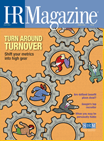 The Society for Human Resource Management’s Investor Metrics Workgroup released its first draft standard for review in April, and the public comment period was open until May 24. The draft recommends that companies report on the following: human capital spending, ability to retain talent, leadership depth, leadership quality, employee engagement and human capital discussion and analysis.
The Society for Human Resource Management’s Investor Metrics Workgroup released its first draft standard for review in April, and the public comment period was open until May 24. The draft recommends that companies report on the following: human capital spending, ability to retain talent, leadership depth, leadership quality, employee engagement and human capital discussion and analysis.
“The objective of the retention metric is to provide a potentially important indicator of organizational capability and health,” the report states. “For example, an inability to retain talent may compromise an organization’s ability to achieve its goals. Furthermore, increases in turnover may signal that employees lack confidence in the organization.”
According to the report, both voluntary and total turnover should be reported for the organization as a whole and for each of the 10 job categories used in the U.S. Equal Employment Opportunity Commission’s Employer Information Report EEO-1.
“Voluntary turnover includes any turnover that is initiated by the employee,” the report states. “This includes, for example, resignation, job abandonment, normal retirement and acceptance of early or enhanced retirement packages. Voluntary termination does not include any termination that is due to death or initiated by the employer such as discharge or a reduction in force. Total turnover includes all turnover, regardless of reason. Job categories should be defined according to the most current EEO-1 report at the time.”
The draft includes a formula for calculating voluntary turnover: “The number of employees in the category who voluntarily left the organization over the fiscal period divided by the average number of employees in that category over the fiscal period.”
Proposed instructions for calculating total turnover are: “The total number of employees in the category who left the organization over the fiscal period divided by the average number of employees in that category over the fiscal period. The total number of employees for EEO-1 job category should be included.”
The report notes that if an EEO-1 category has so few employees that turnover numbers may not be statistically meaningful, they do not need to be reported for that category. “Although there is no hard and fast way to determine the number of employees within an EEO-1 category that constitutes a sufficiently large group for reporting purposes, a rough rule of thumb is that if there are fewer than 30 employees the category is too small for reporting,” the report states.
Advertisement
An organization run by AI is not a futuristic concept. Such technology is already a part of many workplaces and will continue to shape the labor market and HR. Here's how employers and employees can successfully manage generative AI and other AI-powered systems.
Advertisement


